Don't wanna be here? Send us removal request.
Text
Tech’s Frightful Five: They’ve Got Us
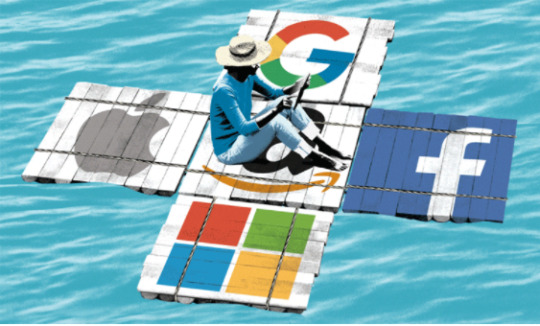
A few weeks ago, I bought a new television. When the whole process was over, I realised something incredible: To navigate all of the niggling details surrounding this one commercial transaction — figuring out what to buy, which accessories I needed, how and where to install it, and whom to hire to do so — I had dealt with only a single ubiquitous corporation: Amazon. Read this blog by Farhad Manjoo, Tech New York Times.
It wasn’t just the TV. As I began combing through other recent household decisions, I found that in 2016, nearly 10 percent of my household’s commercial transactions flowed through the Seattle retailer, more by far than any other company my family dealt with. What’s more, with its Echos, Fire TV devices, audiobooks, movies and TV shows, Amazon has become, for my family, more than a mere store. It is my confessor, my keeper of lists, a provider of food and culture, an entertainer and educator and handmaiden to my children.
This may sound over the top. But what about you? I suspect that if you closely examine your own life, there’s a good chance some other technology company occupies the same role for you as Amazon does for me: as warden of a very comfortable corporate prison.
This is the most glaring and underappreciated fact of internet-age capitalism: We are, all of us, in inescapable thrall to one of the handful of American technology companies that now dominate much of the global economy. I speak, of course, of my old friends the Frightful Five: Amazon, Apple, Facebook, Microsoft and Alphabet, the parent company of Google.
The five are among the most valuable companies on the planet, collectively worth trillions. (Apple reached $800 billion in market capitalization this week, the first of any public company to do so, and the others may not be far behind.) And despite the picture of Silicon Valley as a roiling sea of disruption, these five have gotten only stronger and richer over time.
Their growth has prompted calls for greater regulation and antitrust intervention. There’s rising worry, too, over their softer, noneconomic influence over culture and information — for instance, fears over how Facebook might affect democracies — as well as the implicit threat they pose to the jurisdictions of world governments.
These are all worthy topics for discussion, but they are also fairly cold and abstract. So a better way to appreciate the power of these five might be to take the very small view instead of the very large — to examine the role each of them plays in your own day-to-day activities, and the particular grip each holds on your psyche.
So, last week I came up with a fun game: If an evil, tech-phobic monarch forced you to abandon each of the Frightful Five, in which order would you do so, and how much would your life deteriorate as a result? To help answer this, please take a moment with this column’s companion quiz.
When I went through the thought experiment, I found that dropping the first couple of tech giants was pretty easy — but after that the process became progressively more unbearable. For me, Facebook was the first to go. I tend to socialize online using Twitter, Apple’s messaging system, and Slack, the office-chat app, so losing Mark Zuckerberg’s popular service (and its subsidiaries, Instagram, WhatsApp and Messenger) was not such a big deal.
Next, for me, was Microsoft, which I found slightly more difficult to quit. I don’t normally use any Windows devices, but Microsoft’s word-processing program, Word, is an essential tool for me, and I’d hate to lose it.
In third place, full of regrets: Apple. There’s nothing I use more than my iPhone, and close behind are my MacBook and iMac 5K, which may be the best computer I’ve ever owned. Abandoning Apple would prompt deep and truly annoying rearrangements in my life, including braving Samsung’s bad software. But I could do it, grudgingly.
It’s when I imagine getting down to the last two that life becomes something else. It’s here that you begin to confront how thoroughly the Frightful Five have woven their way into our lives, and how completely we’ve come to depend on them.
In fourth place, for me, was Google. I just can’t fathom living without it. Without the world’s best search engine, my job would become well-nigh impossible. Without YouTube, it would become significantly less entertaining. Without everything else Google makes — email, maps, calendar, translation software, photo storage and the Android mobile operating system, which I’d need after ditching Apple — I’d be relegated to a life of some poor soul from long ago (say, 1992).
0 notes
Text
Our first Fusion Intern Pathway students at Tamaki College
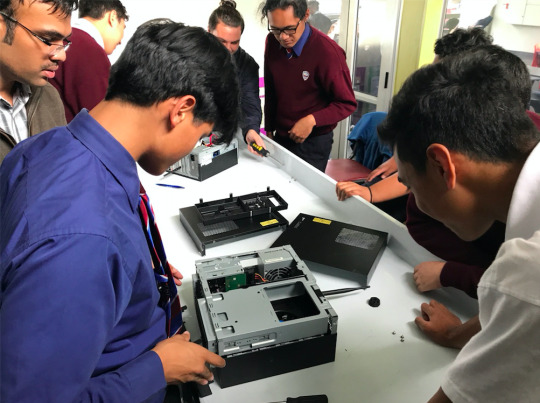
Awesome to see this program up and running. Looking forward to more of this across the Manaiakalani schools in the future.
Well done to Matt, Raj and Pippa for all the effort that went into getting to this point.
Students from the tech hub at Tamaki College learning about IT hardware, taught by Raj Sharan, a Systems Engineer from Fusion. Raj both manages the college¹s IT needs and he runs the Fusion Intern Pathway programme at the school. The newly launched Internship programme bridges the gap between schools, practical workplace and academic learning, with the outcome a well-trained and practical employee. It reflects Fusion¹s commitment to giving students from the Manaiakalani clusters all around New Zealand a pathway for career progression and achievement.
At Fusion we¹re proud that we¹ve solved the conundrum of getting young people out of school who are digitally trained and into a career that involves technology when they haven't had any experience? We've cracked that nut.The Fusion IT Intern Pathway a three-way partnership between Tamaki College, the first full digital learning secondary school in NZ, the Manaiakalani Education Trust, theAward winning programme that¹s transforming student¹s education in low decile schools, and Fusion Networks.
0 notes
Text
Here's How to Protect Yourself From Ransomware Attacks - New York Times
http://ift.tt/2pEnss8
New York Times
Here’s How to Protect Yourself From Ransomware Attacks New York Times Ransomware, a decade-old form of malicious software that is often transmitted by email or web pop-ups, involves locking up people’s data and threatening to destroy it if a ransom is not paid. Credit George Etheredge for The New York Times. A decade-old … ‘Perfect storm’ of ransomware and network worm hits unprotected computers globallyComputerworld Switching from Windows won’t erase ransomwareUSA TODAY all 1,102 news articles »
high-tech-news.tumblr.com
2 notes
·
View notes
Text
NZTech Update – EdTech, ShadowTech and Hi-Tech winners

As huge fans of the Manaiakalani digital learning programme here, and having just launched our IT Intern Pathway in New Zealand, we wholeheartedly endorse this investment and focus. Read what Tom Chignell NZTech Board,has to say.
“Taken at face value, language can sometimes be misleading. When my eldest child came home from his first days at intermediate school to announce he was going to study ‘technology’, I admit I was pretty excited. Tell me more, I asked. I was informed technology has two options – soft and hard. Awesome! Is that soft as in ‘software’ and hard as in ‘hardware’, I wondered, only to have my excitement quickly dashed. Silly Daddy! Soft and hard refer to the materials used to make things, like fabric and wood. Well at least the boys are doing needlework and the girls explore woodwork, I conceded, with some resignation. That’s more of an opportunity than my sisters received.
However, more recently we received the news that this term my 12 year old second son would no longer be taking ‘hard technology’, as planned, but would be learning ‘coding’. So what is happening with the change of focus?
Led by the United Kingdom (UK), there has been a move to revolutionise the curriculum from primary level upwards. The technology focus will no longer be solely on applications (e.g. learning how to use an iPad or Powerpoint) but on developing digital competency from the age of five. Yes, algorithms, coding, debugging, analysing data, Boolean logic, hardware and more. I didn’t learn any of this until I was at University!
As reported in the Guardian at the time, “Campaigners argue that learning programming skills will benefit children in other ways whatever their ultimate career – almost akin to the reasoning for giving children the chance to learn a musical instrument or foreign language”. Some advocates go as far as to put the subject on a par with mathematics in the school curriculum.
In July 2016, two years or so behind the UK with strong support from NZTech and a little impatience from some quarters, Education Minister Parata announced similar changes to the New Zealand curriculum, effective from 2018. Let’s hope this is embraced by schools, from primary upwards. In Australia, similar education policy is taking time to filter down from the Federal level through state education ministries against a similar timeline. Meanwhile, there is a huge challenge in primary schools in particular to upskill teachers, most of whom know little or nothing about coding.
So, having been a bit of a laggard, it turns out that my son’s school is getting ahead of the curve and not waiting for the formal curriculum to emerge, using materials from the earlier Digital Technologies Guidelines and generous support from more advanced local schools. Good progress and great for my 12 year old who has already honed in on a career in technology!”
As huge fans of the Manaiakalani digital learning programme here, we we wholeheartedly endorse this investment and focus. Led by the United Kingdom (UK), there has been a move to revolutionise the curriculum from primary level upwards. The technology focus will no longer be solely on applications (e.g. learning how to use an iPad or Powerpoint) but on developing digital competency from the age of five. Yes, algorithms, coding, debugging, analysing data, Boolean logic, hardware and more. I didn’t learn any of this until I was at University!
Led by the United Kingdom (UK), there has been a move to revolutionise the curriculum from primary level upwards. The technology focus will no longer be solely on applications (e.g. learning how to use an iPad or Powerpoint) but on developing digital competency from the age of five. Yes, algorithms, coding, debugging, analysing data, Boolean logic, hardware and more. I didn’t learn any of this until I was at University!
As reported in the Guardian at the time, “Campaigners argue that learning programming skills will benefit children in other ways whatever their ultimate career – almost akin to the reasoning for giving children the chance to learn a musical instrument or foreign language”. Some advocates go as far as to put the subject on a par with mathematics in the school curriculum.
0 notes
Text
As New Zealand Courts Tech Talent, Isolation Becomes a Draw
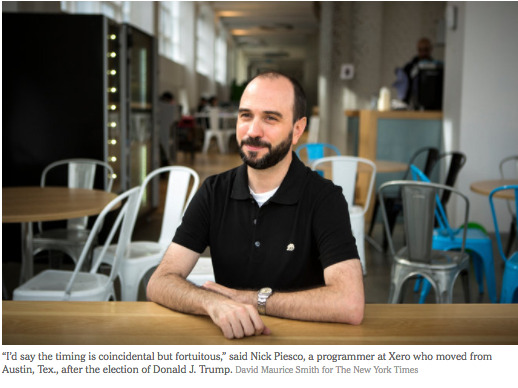
In the South Pacific, software no longer needs a hard sell. New Zealand has long wanted to be a tech hub, but distance was an issue. Now, at a moment of political upheaval around the globe, that isolation has become a selling point. Read this report from JACQUELINE WILLIAMS and DAVID STREITFELD writing in the New York Times. APRIL 14, 2017.
A municipal program to fly in 100 developers next month — wine them, dine them and offer them jobs — was expected to draw 2,500 applications. But the recruitment effort, called LookSee Wellington, was besieged with more than 48,000 entries, including workers at Google, Amazon, Facebook, M.I.T. and NASA. At one point so many people checked out the program that the website failed.
For all sorts of reasons, New Zealand suddenly makes sense. The cost of living is less than in San Francisco. Commuting is less wearying. And American politics, “Brexit” and the Islamic State are on the other side of the world. “It’s just one of those things where the stars are aligned,” said David Jones, general manager at the Wellington Regional Economic Development Agency.
New arrivals describe New Zealand as more idealistic and less frustrating than other places. “In the U.S., I feel extremely disconnected,” said Alanna Irving, 33, who came here from San Francisco to start two companies. “Things happen all the time that I don’t agree with or understand or think are really good for most people, and I just don’t see any way that I can change that.”
This is the second time New Zealand has tried to use Silicon Valley to jump-start its fledgling tech economy. The current effort is in some ways an outgrowth of the first, featuring the same players.
The first time, there were big promises that were never fulfilled. It was a typical Silicon Valley story, in other words, which makes it a bit of a cautionary tale even as everyone assumes that this time will be different.
The story began more than a decade ago when a billionaire entrepreneur came here to visit and, like so many others, fell in love with the majestic mountains and sweeping vistas. New Zealand is where Peter Jackson filmed “The Lord of the Rings,” a beloved text for many techies. It is the real Middle-earth, a fantasy come to life.
Fantasies are rarely free. People applying for citizenship here are required to have spent 70 percent of the previous five years living in the country, and to commit to living in it afterward. Even humanitarian exceptions are rare.
Peter Thiel, the contrarian investor who made his fortune with PayPal and Facebook, made an irresistible financial proposal to New Zealand in early 2011. He would bring the local economy — whose biggest exports were concentrated milk and the meat from sheep and goats — into the high-tech era. Mr Thiel would serve as the country’s roving tech ambassador, opening doors around the world that are closed to mere government officials.
Even before applying, he set up Valar Ventures, an investment fund named after the gods in “The Lord of the Rings.” Valar put about $3 million into Xero, an online accounting software firm, and was part of a $4 million infusion of cash into Pacific Fibre, which proposed a trans-Pacific undersea cable.
And that, Mr. Thiel signaled, would be just the beginning. “I intend to devote a significant amount of my time and resources to the people and businesses of New Zealand,” he wrote in his citizenship application. He donated about $750,000 to earthquake relief after the city of Christchurch was struck in February 2011.
New Zealand, with a population below five million, gets around 30,000 applications for citizenship annually. Fearful of the potential for corruption and exploitation, it expedites only a handful. Mr. Thiel was one of them. The process was so painless that when the news came out about the investor’s dual New Zealand/American citizenship two months ago, the official in charge said he remembered nothing about it.
“We were so blown away that Peter Thiel was interested,” said Rod Drury, the chief executive of Xero. “Him getting a passport wasn’t a big deal at the time. No one really thought about it.” In fact, no one even mentioned it — including Mr. Thiel, despite his declaration in documents submitted for his application that “it would give me great pride to let it be known that I am a New Zealand citizen.” When the secret was revealed, it created a small uproar. “Someone being able to invest and get citizenship goes against that important New Zealand value of equality,” Mr. Drury explained. “That’s why it has played so much in the media here.”
Mr. Drury is the biggest name in New Zealand’s tech scene, a local version of Bill Gates or Mark Zuckerberg. He recommended Mr. Thiel for citizenship, and Xero was held up as a model of what, with the investor’s help, all the new start-ups could become. The New Zealand government was so enthusiastic about Mr. Thiel’s investing prowess that it became a partner with him in early 2012, putting about $7 million into a Valar fund. The fund did well, primarily because of its big position in Xero.
But the government did not share in the profits. The deal had a clause that said Valar could simply return the government’s investment with a little interest, which it did. Mr. Thiel quadrupled his money, The New Zealand Herald reported in February. Steven Joyce, the minister of finance, did not respond to an email request for comment.
Valar is now based in New York, where it has been investing in European and Brazilian companies. Mr. Thiel declined to comment.
“It’s sad for New Zealand that Thiel and Valar didn’t follow on with more investments,” Lance Wiggs, a local investor, said. “We are starved for cash.” Mr Thiel has been focused elsewhere, including on a long-shot donation of $1.25 million to President Trump’s campaign last year. When Mr. Trump unexpectedly won, that paid off for Mr Thiel in a wide-ranging portfolio. Last month his top aide, Michael Kratsios, became the White House’s deputy chief technology officer. Xero, which has 1,400 employees and customers in 180 countries, took a different path. Its goal is to turn accountants into “growth consultants,” becoming a platform that soars above national borders.
“Gay marriage, cultural tolerance, refugees, active strategies to address diversity — more than ever our leadership here is important,” Mr. Drury wrote in an email to his staff immediately after the election. He proposed setting a moral example by bringing “some refugee groups into our Wellington office.”
A postelection arrival at Xero from the United States is Nick Piesco, 40, who was writing code for a start-up in Austin, Tex. “I’d say the timing is coincidental but fortuitous,” the programmer said of his move 7,437 miles west. Already he and his wife, Reneau Skinner, 39, are talking about becoming citizens. “One of the things that attracted me to Xero was the culture — how they make people feel welcome,” Mr. Piesco said.
That means those barred from the United States under the new administration’s policies, or who think they might be, are ripe for recruitment, Mr. Drury said.
“Especially in the U.S. technology industry, where something like 50 percent of the billion-dollar companies have been built by immigrants, it’s nuts that you make it difficult for engineers to come in,” he said. “It’s crazy for us not to exploit that.”
The LookSee Wellington initiative to bring in 100 software engineers was initially focused on Americans. Then word began to spread. By the time the contest was finally cut off on March 30, India had overtaken the United States in applications. “We’re in a global talent war,” said Chris Whelan, chief executive of the Economic Development Agency in Wellington.
Mr. Drury is already looking to make LookSee an annual affair. After all, it takes the expensive problem of recruitment off Xero’s hands and lets the government do it. “It’s boom time for the next 10 years,” Mr. Drury said. The more immigrants, the better. “We’ll take a lot. We’ll take hundreds.” Correction: April 14, 2017
An earlier version of this article misstated the surname of a local investor. He is Lance Wiggs, not Biggs. Correction: April 14, 2017 Because of an editing error, an earlier version of this article attributed incorrectly a quotation about immigration and tech labor. It was Rod Drury, the chief executive of Xero who said, “It’s crazy for us not to exploit that,” not Nick Piesco.
0 notes
Text
Kiwis keen on ICT industry with top hires in tech sector

A popular online employment marketplace in New Zealand, SEEK has just released its SEEK Employment Report.
SAM WORTHINGTON’s noted in bizedge.co.nz (March 27) the report has highlighted the most job opportunities on SEEK across New Zealand this February, and their average advertised annual salaries.
Sitting at the top of the chain are jobs within the Information & Communication Technology sector with a salary of $92,700.
ICT also remained the top industry for hiring on SEEK for Auckland and Wellington this February.
Trades & Services jobs were next at $59,423 and Manufacturing, Transport & Logistics with a $66,805 salary.
Janet Faulding, General Manager for SEEK New Zealand, says this February advertising on SEEK was fuelled by solid job ad uplift across the country.
“Advertising on SEEK has increased across most of New Zealand’s major regions this February, with Auckland enjoying a staggering 19.2 per cent year on year [y/y] increase,” she explains
“In Wellington, advertising on SEEK also continued to rise, up 11.8 per cent y/y. However, in Canterbury job ads dipped 2.6 per cent y/y this February,” adds Faulding.
The most sought after ICT professionals in Auckland, and their average advertised annual salaries on SEEK were:
Developers & Programmers, $92,927 IT Business System Analysts, $92,202 Help Desk & IT Support, $55,995 While in Wellington, the most in-demand ICT professionals and their average advertised annual salaries on SEEK were:
Developers & Programmers, $93,751 Programme & Project Managers, $105,277 IT Business/System Analysts, $89,792 “February was a great month to be jobseeker in New Zealand, because there was strong year on year job ad growth across several large employing industries on SEEK beyond ICT,” explains Faulding.
“The large industries hiring now reflect what we’re seeing in our economy, which is population growth putting pressure on our services and infrastructure.”
0 notes
Text
Global implosion of trust Acumen Edelman #TrustBarometer

A thought provoking presentation from #AcumenRepublic #TrustBarometer Disturbing that New Zealand is online with global trends, ripe for populist action.
@AcumenRepublic launched the #TrustBarometer research this week, offering us insights into how this implosion of trust affects business and all of us personally - with a special focus on New Zealand.
Latest findings from #TrustBarometer reveals trust in business, government, NGOs and media is in crisis. A global trust implosion has seen trust in media fall to all-time lows in 17 countries at 43% globally, while trust in government has also dropped in 14 markets to 41%.
Michael Dunlop, Chair @AcumenRepublic said: “Trust is at the root of all strong relationships. Trust is affecting the institutions in society to which and with which people relate; we have influence in our individual lives and within our work to try and build trust with stakeholders - it behoves us to stand up and talk about the humanity and the humour in the storytelling….we have to change how we are doing it.. "
#TrustBarometer shows the credibility of leaders is in decline. CEO credibility dropped 12 points globally to its lowest-ever level of 37% (28% in New Zealand), plummeting in every country studied, while government leaders 29% (27% in New Zealand) remain least credible.
”CEOs have been risk adverse. Businesses need to take risks & to rebuild trust you have to tell real stories & not just information @DavidBrain CEO, Edelman Asia Pacific Middle East & Africa
“Sad news is trust gap has widened again. Call to action for business - we need to rebuild trust” @abbie_reynolds Exec Director Sustainable Business Council
Surprising - around 1/4 of Kiwis fear immigration and globalisation. Surprising around 1/4 institutions in NZ are distrusted according to 2017 #TrustBarometerNZ @EmmaMellow Comms Manager for ANZ.
#TrustBarometer shows more than half of the 33,000 respondents believe the overall system has failed them – it is unfair and offers little hope for the future – while only 15% believe it is working and about one-third are uncertain. That mistrust extends to elites with 51% of top quartile income, tertiary educated, well-informed individuals agreeing the system has failed.
“The implications of the global trust crisis are deep and wide-ranging,” said Richard Edelman, president and CEO of Edelman. “It began with the Great Recession of 2008, but like the second and third waves of a tsunami, globalisation and technological change have further weakened people’s trust in global institutions. The consequence is virulent populism and nationalism as the mass population has taken control away from the elites.”
This is reflected by current populist movements which are being fuelled by a lack of trust in the system and economic and societal fears, including corruption (40%), immigration (28%), globalisation (27%), eroding social values (25%) and the pace of innovation (22%). This is evidenced by the findings from the UK, US and Italy where a lack of faith in the system combined with these fears has seen the election of Donald Trump, the Brexit vote and the failed Italian referendum.
Distrust is being magnified by the emergence of a media echo chamber that reinforces personal beliefs while shutting out opposing points of view. Respondents favour search engines (59%) over human editors (41%) and are nearly four times more likely to ignore information that supports a position they do not believe in. Furthermore there is evidence of a further dispersion of authority, ‘a person like me’ is now just as credible a source of information about a company as a technical or academic expert and far more credible than a CEO and government official.
People view business as the only institution of the four that can make a difference. Three out of four respondents agree a company can take actions to both increase profits and improve economic and social conditions in the community where it operates in addition to its core business-as-usual operations.
A concern for businesses however is the perceived role the public sees it playing stoking their fears. The majority of the global population surveyed worries about losing their jobs due to the impacts of globalisation (60%), lack of training or skills (60%), immigrants who work for less (58%), jobs moving to cheaper markets (55%) and automation (54%).
0 notes
Text
#International Women’sDay and #AirNewZealand
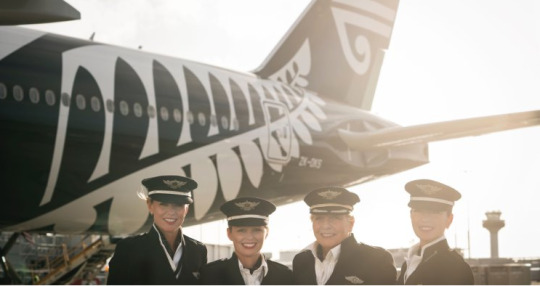
Fusion Networks is committed to encouraging gender parity in our sector. As well as marking International Women’s Day on March 7 it is also Women of Aviation Worldwide Week. Chief People Officer at Air New Zealand Jodie King, shares some thoughts on the work they are doing at #AirNewZealand to foster a culture that embraces, develops and recognises women.
In 2013 just 16 percent of our 80-person strong Senior Leadership Team (SLT) comprised of women. Today that number sits at 36 percent and we’re closing in fast on the 40 percent target we set ourselves to achieve by 2020. This target was set with our overall company gender split in mind – our female employees make up 43 percent of our workforce. These numbers are a good reinforcement that often the first step in addressing an issue is to set a baseline and targets – “what gets measured, gets done”.
Initially we looked at why female representation on the SLT was low and realised that we had a number of great women managers yet they were deemed to be 5+ years away from being ready for senior leadership roles. We decided then to focus on making sure our performance and talent assessment processes were truly accelerating the development of our female employees - this allowed us to create a real platform for change.
Some of the initiatives we implemented, included:
- Launching a women's network, partnering with Professionelle and Global Women - Developing a career and life-changing Women in Leadership programme - Providing many of our women with professional coaches and mentoring opportunities, including sessions with our Executive and SLT Leaders - Taking every opportunity to expose groups of our women to world class female leaders. I have personally hosted groups of women to hear the likes of Arianna Huffington, Oprah Winfrey and Karen Walker speak. Six of our women have also attended (or are about to attend) the world prestigious International Women's Federation programme - run over two residential sessions at Insead and Harvard. - Facilitating greater interaction between our female Board members and female employees. A great example of this is the regular panel discussions we hold. In the past year alone we had more than 1,000 women attend a career panel session we ran with SLT women. These panels continue to be oversubscribed whenever we run them. - Sending female talent to development opportunities offered to us from our partner organisations to address perceived financial or commercial development areas - Co-designing and running multiple financial and commercial programmes where women have worked on real issues facing Air New Zealand in their respective portfolios with mentoring support from the University of Auckland and senior leaders in our Finance function.
And we’re seeing some real traction. Of the female appointments to the SLT in the past three years, more than twice as many have been internal promotions versus external hires. And of these internal promotions, 65 percent have graduated from our internal, very intensive, accelerated development leadership programme where we've had inspirational business women like Theresa Gattung, among others, talk about how they made it in business. All of these appointments and promotions have been made solely on the basis of merit. Not once have I heard anyone express a view that we should give someone a promotion because of their gender.
Looking forward, our pipeline for female talent is also looking incredibly healthy with women making up close to 60 percent of the wider talent population.
While we continue to focus heavily on development, our strategy has shifted up a gear in how we move our talent around different roles to ensure they are getting the best experiential development they can. As an Executive we have been focused on ensuring those individuals moving roles have enough support but what has been fantastic to observe is the support male and female peers alike are giving each other. Our people involved talk about how 'we won't let each other fail' and the transitions have been occurring remarkably smoothly.
We're also looking at how we can attract more women into the organisation at the start of their careers. A number of our female pilots have started a mentoring programme with female pilot trainees at the Walsh Memorial Scout Flying School.
Another area where we are attracting diverse, female talent into Air New Zealand is via our support of the Global Women Champions for Change initiative. This programme aims to increase the number of Māori and Pasifika female employees being employed by New Zealand corporates. Under the programme, we recently had three female university interns placed with us over the summer.
Having strong Board and Executive backing is vital to making headway. Our Board has been very clear on its commitment in this space. Our Chief Executive Officer has also been a big sponsor of this work - freeing up budget and resources and being a visible agitator for change in his leadership messages as well as his personal sponsorship and attendance at Women in Leadership events. Outside of Air New Zealand, he is also an active supporter of the Male Champions for Change initiative by Global Women where male CEOs of major New Zealand organisations are invited to talk openly about how they as male leaders are role modelling equity and parity in their organisations for women and other groups such as Māori and Pasifika.
I have been a part of Air New Zealand’s Executive team for 12 months and the sense of collective responsibility that comes with my position is something I really enjoy. My male peers in the Executive team have challenged me when they don't think I am pushing hard enough to champion women for roles which means if I’m not in the room I can be confident they will advocate on women's behalf which is a hugely satisfying position to be in.
We have some amazing women in our organisation and I’m excited about what’s to come. I know as soon as we hit 40 percent female membership of the SLT I'll be looking ahead to 50 percent representation!
This year’s International Women’s Day strapline #BeBoldForChange struck a chord with me. I am incredibly passionate about women being represented more in business and I think there’s a massive opportunity for women to be more bold, to get out of their comfort zone, to be less constrained by worry, to put their hand up, to expect more, to ask for more, and ultimately experience more.
Whether it’s been working in the UK or here in New Zealand, I’ve benefitted throughout my career from having strong female and male role models who have invested their time in me. It's a hugely satisfying part of my job to pay that forward. Today I’m fortunate to work alongside 4,900 incredible women at Air New Zealand.
0 notes
Text
Brilliant customer service and experience #RFiGroup
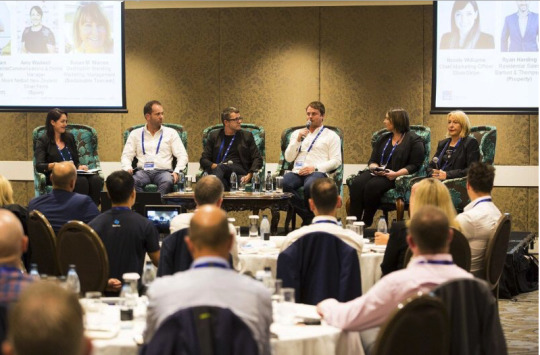
"How beneficial it is, to look outside the box when it comes to brilliant customer service and experience. Such an insightful panel at yesterday's Global Digital Banking Conference - NZ Edition where some of NZ's brightest minds outside of FS talked about the best of the best when it comes to CX
Moderated brilliantly by Nicole Williams (SilverStripe) @Ryan Harding (Barfoot & Thompson), Stephen Maskell (DNA Design), Hamish Pinkham (Rhythm Group- Rhythm & Vines Music Festival), Amy Wadwell (Netball New Zealand - The Silver Ferns), and Susan M Warren (Marketing Manager Fusion Networks). Thanks to all - RFi Group" And thankyou ChloeJames (Group PR and Media Director #RFiGroup and #SkyNews presenter), congratulations for a great conference!
0 notes
Text
Delight and excite your customers
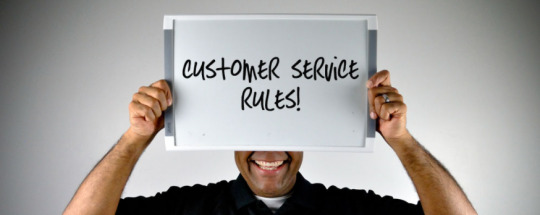
Delivering excellent customer service is a tough job. Business leaders knows that innovating customer journeys and maximising satisfaction creates brand differentiation. But even that can be short-lived when your offering sits in the realm of highly commoditised products or services, and truly unique differentiation occurs far and few between.
“68% of customers say they’ve switched service providers because of poor customer service.” – Accenture
“Customers who encounter positive social customer care experiences are nearly 3 times more likely to recommend a brand.” – Harvard Business Review
“Revolve your world around the customer and more customers will revolve around you.” – Heather Williams
Teams delivering customer experience cannot afford to wait. They need access to the right information at the right time, to offer services that delight the customers NOW, not in a few hours or days. With access to the right information when you need it, you can deliver the best experiences to our customers. take leadership in the experiences that you deliver to your customer.
Are you ready to make that change? Are you ready to build a seamless bridge between your physical and digital worlds, allowing content and knowledge to be shared with teams while still being able to maintain compliance with internal processes, policies, and security requirements? Empower your team to deliver excellent experiences, work on becoming a game changer in accelerating how teams interact and how they can work together to deliver the best experiences to your customers.
Thanks to #FujiXeroxNewZealand Limited for their White Paper on Customer Service
0 notes
Text
Four Ways To Support Your Customers Through Digital Transformation

Digital transformation is a journey that all your customers will embark on sooner or later. Amid massive digital disruption, businesses of all sizes are embracing initiatives that allow them to become more nimble, responsive and innovative. More than three-quarters of senior business leaders agree digital transformation is their top strategic priority, and 96 per cent believe that the pace of change in the digital world is accelerating.
The first step in this journey is a migration to the cloud, offering customers the opportunity to scale resources up or down quickly to meet demand. Yet moving to the cloud also presents significant challenges, from managing the expectations of users and business stakeholders to preparing effective downtime and disaster recovery plans.
This provides your business with a clear opportunity to offer invaluable support and develop new strategic cloud solutions. To keep customers at the top of their game throughout migration, here are four things to keep in mind:
Develop A Clear Strategy In the rush to innovate quickly, it’s easy to end up with a jumbled, ineffective cloud environment due to hasty decisions and a lack of clear communication. Some customers may simply take an ad-hoc approach, adopting different cloud applications as the need arises. Even if your services are engaged at the start of the process, they already have a broad range of applications on different hardware, database and operating system environments. Some departments have likely chosen tools based on their own requirements, without consulting the wider business or considering their existing infrastructure investments.
To minimise confusion and complexity, start customer conversations as early as possible. Take a strategic approach by mapping out existing environments and, where possible, recommend a single cloud platform that supports the entire business. A centralised system that automatically aggregates data from all departments will take the guesswork out of day-to-day operations and remove needless hassle from the migration process.
Plan For The Future Many businesses are so focused on day-to-day demands that they forget to consider future change when making key business decisions. Before your customers move to the cloud, develop a comprehensive strategy that supports the needs of the next generation of employees. Millennial workers will soon make up the bulk of the workforce. They’re heavily reliant on digital communication and accustomed to integrated digital experiences. They’ll expect easy access to data, instant communication and seamless online collaboration. A cloud solution that offers this kind of sophistication is crucial, or your customers will soon find themselves undergoing another migration.
Pick Your Timing A transformation process isn’t something to rush into. Work closely with your customers to determine the best time to begin a migration, when you can be sure it will cause as little disruption as possible.
Consider these questions: Does the business operate within certain hours or around the clock? What trends are available to indicate when business will be slowest? When should maintenance be scheduled? How is disruption likely to impact business productivity?
Scheduling migration carefully will help to minimise serious issues, but it’s still important to manage expectations. Work with customers to develop a plan for communicating unexpected downtime with users and stakeholders.
Train Key Resources Staff training is an essential component of any digital transformation journey – but it’s also a hugely time-consuming one. To make this easier, help identify a few key people who will be trained on upgrades or maintenance requirements, giving them responsibility for educating the rest of the team. Not having to train the entire staff will save substantial time and resources. Developing a documentation and reference library for new employees helps staff become familiar with tools without investing significant hours in creating additional onboarding material.
Summary Technology is evolving at an unprecedented pace. Your customers are transforming their businesses for the digital world and, even if some are further down this road than others, it’s a journey they all need to make. Along the way, they’ll rely on trusted advisors to streamline the process and deliver additional value. Offering useful advice and support will give your business a competitive edge, helping you generate new business and strengthen existing customer relationships.
Article provided by Westcon and Comstor Copyright © 2015 WestconGroup, Inc. All Rights Reserved.
0 notes
Text
It's Time to Abandon the Castle

For the past 25 years, organisations of all sizes have relied on the castle and moat protection model – multiple layers of security with the ability to ‘raise the drawbridge’ as a last line of defence. Today, the castle is under siege from all sides and the bridge and moat model has run its course.
Fusion Networks partners with Juniper. Kevin Walker wrote this blog on Juniper Forums, Feb 14 2017.
Today’s networks are extremely complex, but like the castle they are equally simple in foundation: routers, switches and firewalls are the primary building blocks – whether physical or virtual. And like the castle that can no longer keep up with new kinds of foes, network attacks are increasing in complexity, agility and the ability to do damage.
Although many cyber security teams are making headway in defending against well-known attacks, the frequency and narrowly focused sophistication of attacks continues to increase and challenges the traditional methods of defense within the cyber security professional’s toolkit. In addition, businesses are reducing their datacenter footprints and migrating to the cloud. Without a strong set of defensive tools to detect and protect our organizations, cloud and cloud services can potentially cause new venues for cyber-attacks.
The common thread among all cyber-attacks is that they occur over a network. We’re left asking ourselves: Why doesn’t the network detect and suppress these attacks?
Just over a year ago, Juniper Networks introduced a new approach to cyber defence and protection: the Software-Defined Secure Network (SDSN). It’s a paradigm shift from point-based solutions to end-to-end holistic network security designed to employ all aspects of cyber defence, creating a flexible and agile ecosystem of security. SDSN establishes a framework in which we expect to apply big data analytics from our SkyATP cloud-based security service to direct action on firewalls, switches, routers and within the cloud.
As we announced this year at RSA, the open architecture of SDSN embraces the inclusion of third parties into the ecosystem. SDSN is also designed to fully leverage the analytics of strong curated threat intelligence to allow the customer to decide on the appropriate response and desired level of interaction – from ticket-based to full automation. We’ve delivered on our SDSN promises from last year and are forging away at a rapid pace to design future generations of capabilities expanding SDSN.
Moving forward, our goal is to instil a level of cyber intelligence into the network that will augment conventional methods to suppress attacks in transit by influencing the decision on detection of malware in flight, rather than awaiting detection once it's already landed on the targeted systems or service. This entails having the advanced security and networking capabilities Juniper Networks can provide and eventually being able to use our resources to weave intelligence into the network fabric itself – addressing malicious actions in as close to real-time as possible. We believe that in time the idea of purpose-built cyber devices as the only way to provide protection will become as quaint as the castle and moat defences.
This level of automated threat detection and response from SDSN also means cybersecurity teams can focus on the more difficult threats facing their businesses. Today, these teams spend their days blocking and tackling the malware flowing within their environments. Detection and suppression must be ubiquitous and the network is the natural method of delivery. At Juniper, we believe SDSN is the foundation of such a future state, leveraging partners globally in both the public and private sectors to increase the fidelity of detection across verticals.
As we enter the second quarter-century of cybersecurity, it is a time of excitement and utmost creativity as we place a thumb on the scale that focuses on defending threats that cause harm on the delivery vehicle itself. We can finally answer: Why doesn’t the network detect and suppress these attacks? Well… it does now.
0 notes
Text
What are the top 10 tech trends for New Zealand in 2017?

Digital Transformation (DX) has been a critical topic for business over the last few years and IDC is now predicting a step change as DX reaches macroeconomic levels. By 2020 a DX economy will emerge and it will become the core of what New Zealand industries focus on. From the board level through to the C-Suite, Kiwi organisations must be prepared to think and act digital when the DX economy emerges in 2017.
Report by James Henderson (New Zealand Reseller News)
10 - 4th Platform on the Horizon
By 2020, 1/3 of New Zealand health/life sciences and consumer product companies will begin to develop the first wave of products and services tightly integrating 3rd Platform technologies with the human body; "Augmented Humanity" offerings mainstream in the mid-2020s.
9 - New Benchmarks
By 2020, all New Zealand enterprises’ performance will be measured by a demanding new set of digital transformation-driven benchmarks, requiring 40 per cent–60 per cent or better improvements in leadership, customer engagement, digital offerings, efficiency and agility KPIs.
8 - Digital transformation channel
By 2020, over 50 per cent of New Zealand cloud services providers’ revenues will be mediated by channel partners/brokers.
7 - Digital transformation developers
By year-end 2018, over 50 per cent of NZX organisations will have dedicated digital transformation/innovation teams.
6 - Industry Collaborative Platforms
By 2018, the number of New Zealand industry collaborative clouds will triple to more than 20; by 2020, over 70 per cent of NZX organisations will be digital services suppliers through Industry Collaborative Platforms (ICPs).
5 - Immersive Interfaces
In 2017, 30 per cent of consumer-facing NZX companies will experiment with augmented reality/virtual reality (AR/VR) as part of their marketing efforts.
4 - AI Everywhere
By 2020, 30 per cent of all New Zealand digital transformation initiatives - and 100 per cent of all effective internet of things (IoT) efforts - will be supported by cognitive/artificial intelligence (AI) capabilities.
3 - Cloud 2.0
By 2020, 50 per cent of all New Zealand enterprise IT infrastructure and software spending will be for cloud-based offerings. The cloud will morph to become distributed, trusted, intelligent, industry focused, and channel mediated.
2 - 3rd Platform Default
By 2019, 3rd Platform technologies and services will drive over 75 per cent of New Zealand IT spending, growing at 2x the rate of the market.
1 - Digital transformation economy
By 2020, half of the NZX organisations will see the majority of their business depend on their ability to create digitally enhanced products, services, and experiences.
Learn more on the trends at the leading annual destination channel conference across Australia and New Zealand, bringing together both sides of the Tasman in a collaborative and influential environment.

EDGE 2017 will play host to over 250 high-level A/NZ ICT industry executives, through an action packed four day conference offering in-depth keynotes, engaging panels and compelling business stream sessions.To be held at Hamilton Island on July 30 - August 2, EDGE 2017 is about ‘The Future Channel’, uncovering what is required for ongoing partner success in the next 5 years.The EDGE program includes specific networking time for vendors, distributors and partners to meet and collaborate.
0 notes
Text
Ruckus Wireless 2017 Wireless Predictions & Trends
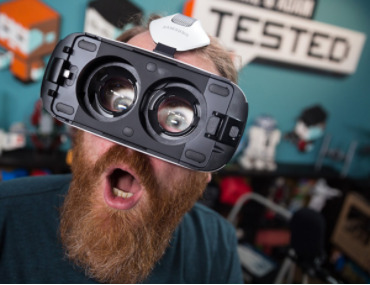
Greg Beach, Vice President, Product management & Product Technical Marketing gives his top wireless predictions for 2017: As experts in the Wi-Fi industry, it’s our job to deliver solutions that give customers the connectivity they need and expect. New advancements are constantly being discovered in this space; in fact, we see them daily. We understand the need to identify trends happening in the industry.
Video streaming dominates data traffic – At the beginning of 2016, Facebook reported an average of 8 billion video views per day on its site. With popular apps like Snapchat, Facebook, and Instagram revolving around the consumption of video posting and streaming, this number isn’t likely to decrease any time soon. As a result, mobile operators will need to increase their network speed, coverage and capacity.
VR gets an upgrade – As of now, most virtual reality headsets on the market require unflattering wires that connect to a computer or mobile device. Improvements that create a completely wireless experience are already being developed and marketed to the masses. We’re confident that we’ll continue to see VR move into a wireless direction, giving more freedom to users.
Wi-Fi enhances omnichannel shopping – Today, consumers rely on multiple ways to find exactly what they’re looking for. Traditional means of retail, e-commerce and m-commerce are all parts of the puzzle to finding the right product or service. Reliable Wi-Fi is the missing piece that will enhance the the shopping experience. Access to Wi-Fi indoors in places like retail stores, restaurants and even public transportation will change the way users shop.
Security increases for public hotspots – We’ve all been told to refrain from browsing personal information when using public Wi-Fi because of the increased security risks. In 2017 more open networks for public hotspots will start to move to secure methods such as Hotspot 2.0 and certificate-based solutions. This solutions mitigates the risks users face when connecting to public Wi-Fi.
Smart arenas and stadiums – Fans go to sporting events not only to support their favorite teams, but to get to an experience unlike the one they get from watching the game at home. In 2016, we partnered with Sacramento’s new Golden One Center to create the world’s most connected sports venue. This year, we expect to see more stadiums and arenas upgrade their indoor and outdoor Wi-Fi with the Wave 2 11ac standard. 2017 will see countless innovations in areas like IoT, smart cities, data consumption and Wi-Fi technology. As the year goes on, we look forward to seeing new technology and developments in the space. What are some predictions you’re betting on this year?
0 notes
Text
BESPOKE TECHNOLOGY SOLUTIONS

Aotea Electrical is the largest cohesive electrical workforce in New Zealand. Such a rapidly growing enterprise demands an IT structure and delivery that can keep up with the pace. That’s where Fusion Networks excels. Read our Case Study on how we deliver seamless digital solutions to serve multiple offices across Aotea Group’s three trading divisions Electrical, Security and Communications).
http://eepurl.com/cyYG7b
0 notes
Text
Are driverless cars the saviour of Auckland traffic?

Driverless cars are being touted as a modern fix for Auckland's traffic mess.
With the city's population growing and motorways groaning under peak hour gridlock, transport authorities are looking at solutions outside the box - including removing humans from behind the wheel.
And while promoting the use of more cars to reduce traffic may seem counter-intuitive, a study commissioned by the government and Auckland Council suggested that once there were enough automated vehicles on the road congestion would decrease and efficiency would improve. In other words, sit back, relax and your car will drive you home quicker than you ever could. But is it all crystal ball gazing or a near-future reality?
Transport Minister Simon Bridges said it was closer than we think, with autonomous vehicles expected to see a renewed focus in 2017.
He said a good example was the trial of driverless shuttles at Christchurch Airport that was due to start this year.
In the short term, he said rather than a sudden influx of fully automated vehicles it was likely we would see automated shuttles taking people to and from places like railway and bus stations.
That would provide the stepping stone toward a fully automated, fully connected network of driverless cars, he said.
Once the technology was commercially viable to the point where they were commonplace on the roads "it should enable us to make much better use of the roads we already have and to build fewer new traffic lanes than we otherwise would have needed in growing cities like Auckland".
SO HOW FAR AWAY ARE WE FROM THAT POINT?
The government and council commissioned report said that for any substantial benefits to come from reconfiguring road space for the use of connected and autonomous vehicles, at least half of all cars would need to be autonomous.
That mark was expected to be reached by 2055 and could result in a 22 per cent improvement in road capacity, the October 2015 report from University College London and University of Auckland said.
It added that by 2075 the entire fleet was predicted to have shifted to connected and autonomous vehicles.
Auckland Transport spokesman Mark Hannan said they were "constantly reviewing planning horizons to ensure AV technologies are given consideration when new infrastructure is planned and built".
Bridges said driverless cars could be legally trialled on the roads right now.
"New Zealand is well placed to test autonomous vehicles as our legislation does not explicitly require a driver to be present for a vehicle to be used on the road, which means so long as a vehicle meets relevant safety standards, and the testing is carried out safely, we could test a truly driverless vehicle today."
DRIVING US TO THE EDGE OF TOWN
As well as transforming traffic, self-driving cars could increase interest in outer suburbs and satellite townships, Bayleys national residential manager Daniel Coulson said.
With the potential to cut commuting times, properties on the suburban fringes would be a more attractive prospect, Coulson said.
"In Auckland, this could push up house prices in greenbelt locations such as Te Kauwhata, Warkworth and Helensville," he said.
While he said established inner-city suburbs would always retain their value more people would opt for the pace of life in the suburbs if it was more convenient to get to and from work.
Coulson said the other big shift that would follow driverless cars was an uptake in car-sharing, such as driverless Ubers.
He said houses one day may not even need garages, while car parks could be redesigned as parks, public spaces or residential/commercial developments.
Deputy head of urban design at the University of Auckland professor Errol Haarhoff said the move toward driverless technology would be a major shift in the way we live, and pose big questions for government in how much they were willing to invest in it.
The cost of building dedicated infrastructure for driverless cars, or to accommodate life on city fringes, could be hugely expensive, Haarhoff said.
Plus, it was likely driverless cars would have to use the same infrastructure that existing cars use, meaning more road upgrades.
The other issue for car-centric cities such as Auckland would be a change in attitude towards private car ownership.
"Your status in society would no longer depend on you having a BMW in your garage - you would be quite happy to be driven around in a plastic bubble," he said.
From Stuff, JOSH FAGAN January 22 2017
0 notes
Text
AT to trial electric buses
Auckland Transport is to carry out a full trial of electric buses.
The government has announced funding for the E-Bus trial and related infrastructure as part of the EECA Low Emission Vehicles Contestable Fund.
AT has been awarded up to $500,000 to part fund an electric bus trial and close to $300,00 for electric vehicle charging infrastructure. Auckland Transport will top up the funding so two buses can be used in the trial.
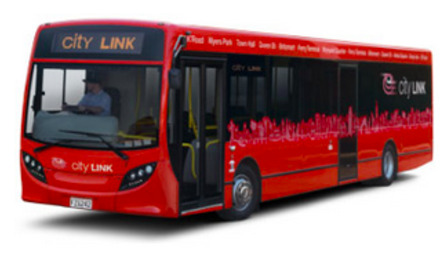
Auckland Mayor Phil Goff says, “Great news for Auckland as we do our part to reduce emissions and combat climate change. Whether it is trains, buses or cars, electrification of our transport network is key to making Auckland a cleaner more sustainable city, and providing a better customer experience for our public transport users.”
Auckland Transport Chief AT Metro Officer Mark Lambert says AT wants to test current E-Bus technology in Auckland. “We will trial two E-Buses to gather real operating data and to raise public awareness of the technology. We expect them to be used over different routes and conditions to fully test them.”
Mr Lambert says AT is constantly reviewing planning to ensure emerging technology like E-Buses is considered when new infrastructure and services are planned and delivered.
“One of our challenges is to accurately estimate when this technology will meet the needs of our customers and service and route characteristics and also commercial viability.”
Mr Lambert says the grant from EECA will mean that a full trial can begin later this year. “Auckland Transport is working to develop a Clean Bus Roadmap for Auckland.”
Modern electric buses can have a range of more than 200 km with one charge and can be enabled for fast or overnight charging.
Funding has also been provided for installing 60 EV charging stations at AT parking facilities around Auckland.
Media Release from Auckland Transport website https://at.govt.nz/about-us/news-events/at-to-trial-electric-buses/
20/01/2017 04:30 p.m.
0 notes